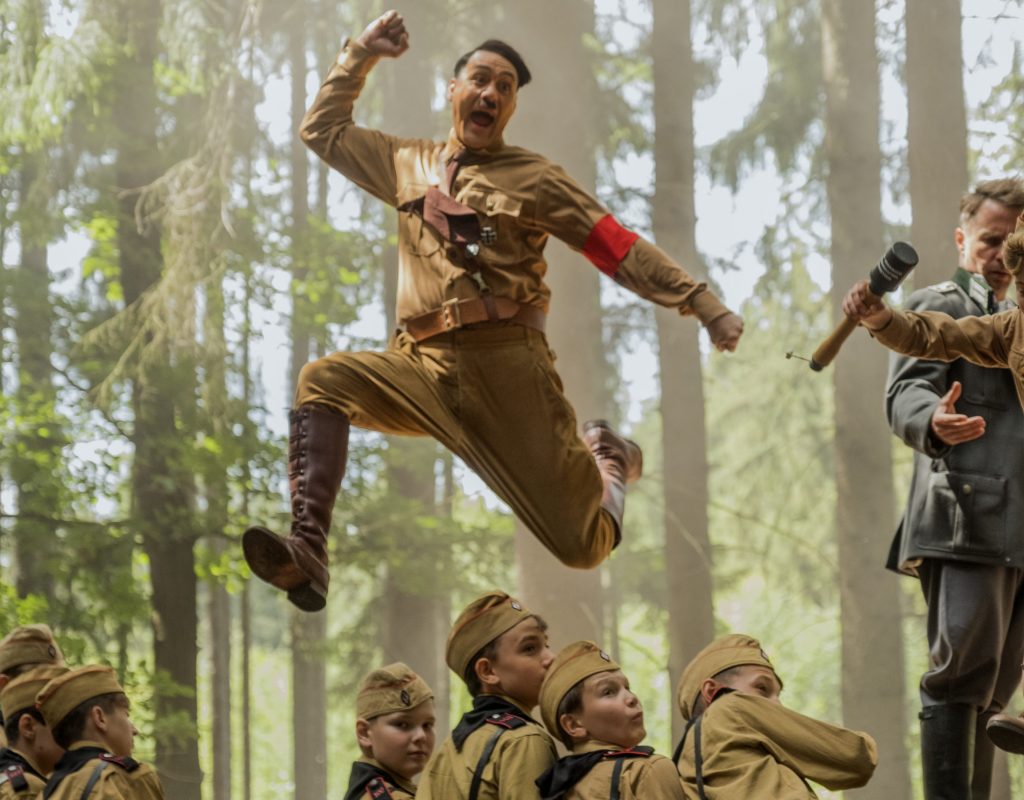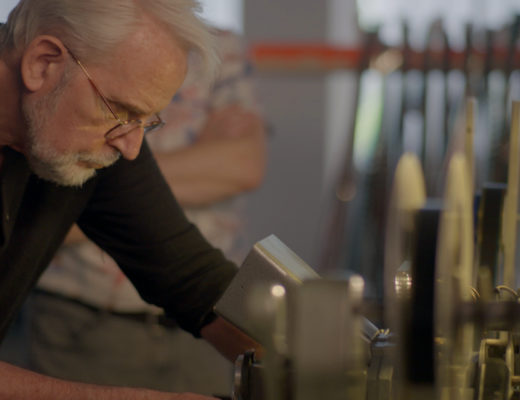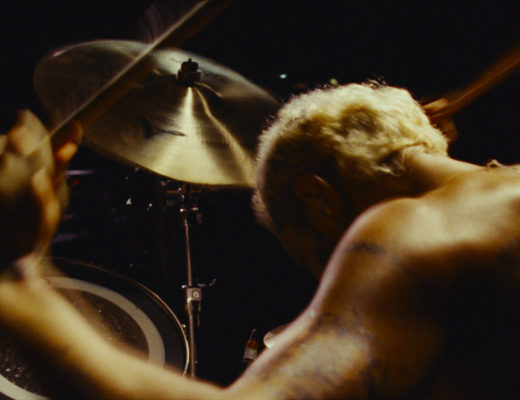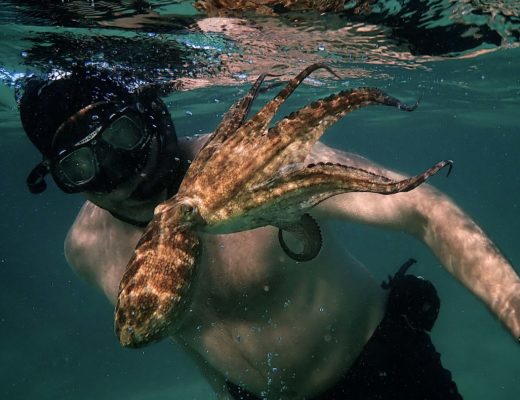Tom Eagles just won the 2020 ACE EDDIE for Best Editing – Comedy for his work on Jojo Rabbit.
Eagles’ other work includes Hunt for the Wilderpeople and What We Do in the Shadows, both with director Taika Waititi. He also worked on the Spartacus TV mini-series and an episode of Ash vs. Evil Dead among others.
This interview is also available as a podcast.
(This interview was transcribed with SpeedScriber. Thanks to Martin Baker at Digital Heaven)
HULLFISH: We’re recording this on the afternoon of the 2020 ACE Eddies. Are you going tonight?
EAGLES: Yeah.
HULLFISH: Congratulations.
EAGLES: Thanks.
HULLFISH: I just watched JoJo Rabbit this afternoon. It’s a very entertaining movie.
I would think that one of the biggest editing challenges for this film would have been walking the tightrope of tone between the comedic and the more dramatic deeply moving moments.
EAGLES: That was on our mind every day. Every scene that I was cutting I was always aware of trying to get that tonal balance right. So we had a lot of material. We definitely had the material to make a purely comedic film all the way through to the end, but on a structural level we found that we wanted to kind of transition at a certain point in the film from comedy into drama. But we never wanted to lose either of those elements. So it was always a question of keeping all the balls in the air. So it was important to me that we had signposts early on.
Some people were a little bit alarmed by the scene when JoJo and Rosie walk into the square and they find some bodies hanging there because the film up to that point has been fairly light and comedic — aside from the rabbit death.
I was always an advocate of having that scene as early as possible because it kind of signposts where the film was going and it also shows that we know that Nazis are no joke. It’s been a comedy about Nazis, but this is what Nazis do. So we had to kind of keep those two things in play.

And then towards the end of the film, we really pulled out a lot of the comedy. So we took out gags but we also took out characters that were too large and comedic. We didn’t see so much of Rebel. We took out a lot of Adolf, after the midpoint hairpin turn (a major dramatic plot development that is a spoiler) you don’t see so much of Adolph until the very end when Jojo has an opportunity to break up with him.
And then just on a performance level: how much do we lean on comedy? We’ve got all these gags. Taika did a lot of improv – essentially writing on-set. How much of it do we use and do we not use? When is a good time to make a joke? Sometimes we have funny scenes and then emotional scenes and we are asking the audience to keep both of those things in play, which is very difficult.
So you have scenes like Stephen Merchant’s sequence in the movie where he comes to the house playing a Gestapo agent. We’ve got Stephen Merchant and we had all these great gags. We wanted to be funny but we need you to still feel that tension. We kind of leaned on JoJo and Elsa for that, though.
Sure, Stephen can do a gag, but then we’re back to Jojo and we know what’s at stake. And also Stephen himself just had this amazing ability to perform these gags but there was something very sinister about him and he did give us these takes — the ones that we used — where he is kind of buffoonish but he’s also terrifying, which I think is in some ways quite true to life. These characters might be silly but they are also the same people who are bureaucrats who could wind up killing you. So every day, every scene we would keep tone in mind.

HULLFISH: What were some of the things that guided you in having objectivity about tone? Did you do screenings? Or was it just the two of you — Taika and you — saying, “We gotta cut back on the comedy”
EAGLES: It was both. But Taika screens a LOT. Every couple of weeks. Every time we changed anything significant with the movie we would screen — initially to a small group of friends of Taika’s and always new people, so it was people were seeing it for the first time. Then gradually we grew to a friends-and-family screening at the Fox lot for maybe 80 people and then eventually we got big screenings — 300-400 people. We would get them to do full questionnaires.
And also you got to sit in a room and feel where the film was lagging, what jokes were getting laughs, but also what things were getting gasps. There were certain moments — when we were getting the cut right — that people would respond in really visceral ways. They would gasp. They would cheer at the end of the film. So it’s a really useful process for us.
HULLFISH: Is there a key to executing the transitions between some of those big tonal changes? Like some were just hard cuts, like a punchline and others…
EAGLES: It depends. I think that the pivotal scene — which is kind of a spoiler scene — at the midpoint in the movie and we actually worked quite hard to keep things light and smooth leading up to that midpoint. So that’s a good example of a handbrake (to the film.) Jojo’s in such a light, innocent place when that critical moment happens.
HULLFISH: So, someone important to him dies. I wanted to talk about that scene — without spoiling it. At that moment, you really change the pace to allow the audience to absorb that moment. Can you talk to me about building the response time for the audience into the scene?

EAGLES: Yeah. You’re right. That’s always hard because people who were in on the editing process and have seen it a bunch of times are always gonna tell you, “We’re not learning anything new here. Let’s move on.” But it was really important to just have that space. Talking about the moments where Jojo is just sitting there.
HULLFISH: That and there’s a little montage of snowy rooftops that you built.
EAGLES: To be honest there’s no definitive meaning behind the rooftops. For me, it felt very anthropomorphic. It was like his pain was being witnessed by the town but for some people they think about you know who might be in all of those attics, so everyone takes something out of it and that’s the beautiful thing when you give people space to just stop and look at some images.
Music was really important there. I had temped with a Liszt piano piece, which was kind of gentle but eventually quite overblown by the time the sequence climaxes. It was always the intent to do that sequence without words.
That’s one of composer Michael Giacchino’s pieces that I love the most because his score really nails that emotional journey from emptiness and loss to anger. But you see in Jojo that he doesn’t hate her even, he just doesn’t know what to do at that point. This is what everything he’s learned up to this point would tell him to do. But he’s kind of broken. You see him collapse on the floor. Especially in a movie like ours that is quite fast-paced at points that you also give audiences a break. And by doing that — by over-cranking the pace in some areas — you really emphasize the moments where you do stop and breathe and they’re always contentious, but really important.
HULLFISH: There’s a lovely little featurette that they did on the editing of the movie.
EAGLES: Really?
HULLFISH: You are interviewed and Taika says some lovely things about you including your sense of pace and rhythm. And I definitely got that sense of pacing. In many movies — especially when they’re beautifully edited — there is a dynamic of the kinetic, frenzied editing, then a slowing down like when he’s looking for Elsa for the first time. The shots are very slow, methodical, right? There’s a great sense of tension. But there’s also super-fast war scenes and comic patter. Talk to me about building those and juxtaposing the fast with the slow.
EAGLES: That sequence that you’re talking about was really informed by genre. I thought of it as a little horror film within the film. And when I read the script that’s the first thing I said to Taika and he said, “Yes! We need to score it that way.” But he also wanted to be careful that we didn’t slip into pure horror. It had to be this kind of childlike innocent horror so that we know that we’re seeing this from his point-of-view.
We’re not saying she’s a monster but we are saying that HE thinks she’s a monster. So there was a delicate balance. But that was just horror film editing. You stretch it out as long as it can possibly go. And she was great with her performance as well — the fingers around the doorway and then walking down the banister and so you’re also driven a little bit by the dailies that you get.
Taika, at one point, asked me to cut a vision of the film where we literally took out all of the air.
HULLFISH: Really?!
EAGLES: So it was Dragnet-style. All the scenes between Jojo and Elsa where they just hit each other. BAM BAM BAM. And it was horrible. And we knew it would be horrible. But what it told you is where the emphasis needed to go. Where the pauses needed to be. So it was kind of a useful process.
And so every scene — even in the fast scenes should kind of operate like that bam bam bam. And then they deliver you somewhere, hopefully.

HULLFISH: There’s a quote from you in that little featurette talking about the actor who plays Jojo and how you would find these perfect little moments with him and then build a scene around that. How do you build a scene around a specific point in a performance? Do you go from there and build out or do you just know it’s there and build it in a linear fashion?
EAGLES: I think you know it’s there. You know that you have to land on the close-up of him — if that’s what it is. And maybe you don’t even have the whole performance because often — you find with kids — it’s a little bit hard to know where the gold will come and maybe it comes just as the performance is breaking up.
Quite often with kids, they’ll give you something really perfect, then the kind of rational voice breaks in and he stops himself and says, “Wait. Am I doing it right?” He was very eager to please and he’s a really smart kid, so his brain would take over and you want the bit just before his brain takes over. He’s just innocent because that’s what Jojo is — although he’s a fanatic at the beginning of the movie — it’s only because he’s been brainwashed and radicalized. And he’s such an open book emotionally.
HULLFISH: You said something interesting to me that I wonder if you can articulate. You said there’s that moment you have to cut away just before his brain kicks in. I totally get that, but how do you know his brain kicks in and that ruins the performance?
EAGLES: Sometimes it’s very literally that he’ll stop himself and say, Hang on. “What am I supposed to be thinking and saying here?” I think Rachel House — who worked with the child actors on this movie — I think that was one of his biggest jobs is to try and keep them spontaneous and keep them in the moment and stop them from trying to be actors and try to overthink the performance.

I think you just see it. I think to be an editor you have to be empathetic. You have to be able to read what’s going on in someone’s eyes. And we all interpret it differently.
HULLFISH: Did you have to have two different editor brains going on — one for the absurdist humor and one for the dramatic. Or you didn’t really have to think about performance in that way.
EAGLES: No. I think Taika had to think about it in terms of — he had three different types of actors: he had really straight actors like Scarlett or Thomasin McKenzie and he had the kids and then he also had these comedians where he would throw them lines.
For me, as much as we’ve talked about it, I don’t see such a huge gulf between comedy and drama. Comedy is just a great tool. It opens a door and if you can get people to laugh you loosen them up and they can look at things that they might not want to look at. They can think about things differently, which is quite important when you’re trying to persuade people to empathize with a Nazi — a little Nazi.
So for me, I don’t even think of them as different genres. It’s all part of the same thing and good humor should also have all the same elements of storytelling and emotion built into it. The humor that I love is stuff that makes you feel something and that you can relate to.
HULLFISH: I don’t know too much of Taika’s background from being in New Zealand or as a comedian. But I often talk about editing as joke-telling — that you’re trying to boil things down to just the essence and you have to get the timing right.
Do you find that Taika’s comedy chops are informing his ability to help you edit?

EAGLES: I think so. That’s what Hitchcock’s said, “A good editor should be able to tell a joke.” You have to put some caveats on that because good editors are often people who like to stay in a dark room not talking to anyone, so I can’t imagine myself getting up on stage and telling a joke but I think understanding the rhythms of a joke. A joke is just a story, right? It has a beginning, a middle, and an end and it has to deliver you somewhere.
Ideally, you shouldn’t see it coming but it should make sense when you get there. So, yeah, I think Taika, as a comedian, with his background in comedy, it really gives them a head start on dramatic scriptwriting and working with me in the edit also.
I think it’s the same with comedic actors. They’re often naturally really great actors. They have great rhythm. They can understand the structure of a script which was important to us. Sometimes it had to be kind of Dragnet fast but then it has to deliver you somewhere.
HULLFISH: How did your relationship start and how do you guys collaborate?
EAGLES: New Zealand’s kind of one big small town. So you wind up knowing a lot of people in the film industry. The first time I met Taika, I woke up and he was crashed on my couch because it was that kind of house and he was that kind of guy. He was busy making art films then and probably not getting paid a lot of money to do them.
But I really got to know him through my wife, Dannelle Satherley, who was the makeup designer and hair designer on Jojo Rabbit, but also on some of his earlier movies.
So she went down to East Cape to shoot Boy. I maybe went down and visited once, but I also met Taika and producer Ainsley Gardner at our place when they were going through that process of planning the look of the film. From there I went to some screenings and had some ideas and I was very happy that they took on some of those thoughts and I wound up cutting trailers for him for Boy and that was the first little thing that we did together.
And it was just a great process because he’d loved what I’d done and he would amplify it. He’d say, “I love that! I want more of that! Let’s take that and build it into a bigger joke.” So it’s definitely the best trailer I ever did. Then he gave me a call to come down to Wellington to work on What We Do in the Shadows. So that was the first feature we worked on together.
HULLFISH: How do you collaborate?
EAGLES: Taika is great. I’ve worked with all kinds of directors and I like all the different styles. Some people will sit right up at your elbow with you the whole time. And that’s great because you get a lot of time collaborating in the room.
With Taika, it’s the opposite. He tries to get as much distance as he can from the shoot. So I’m kind of a tool in that process. I wasn’t there. I always stay away from the set. I don’t know how long a shot took to set up or what the intention was.
I’m just watching the dailies and giving him my response to that. And then he gives you a lot of time throughout the process. I had, like, two weeks to do an assemble. Then he encouraged me to be harsh — to cut scenes that weren’t working.
And then at various points throughout the edit, he would go away for a fairly long period because he had so much other stuff on as well. And in those periods I was encouraged to just come up with stuff. So I find it really fruitful. When a director does that, it really puts the onus on you to keep coming up with ideas. You just throw as much stuff at him as you can and he filters it through his unique perspective. He likes some stuff, he doesn’t like some other stuff — and that’s how you get a Taika movie.
HULLFISH: It’s interesting that you point out that he said to be brutal and cut stuff out in the assembly because I’ve talked to a bunch of editors about that — and obviously it depends on the director — but some people say, “No. That assembly has to be THE SCRIPT.” and other people say, “Oh no. If there’s a bad scene, you should lose it.”
EAGLE: It’s very unusual, in my experience. Most people would want to see the whole script assembled, but I think Taika knew that if we did that — and if we included all of the improv and everything — it would be a fairly unwatchable experience. So he wanted to watch a movie. When he sat down the first time, he wanted to have something that he could respond to.
And I think I was probably still a little bit too cautious for his liking in some way. We had to break the screening up because the film was still so long. And then it’s not like he’s necessarily going to agree with me on what to cut, but at least you kind of get a sense of the shape of the movie and you’re not just watching this interminable succession of gags and everything that we ever thought was any good.
But definitely a lot of people want you to just bank that. I called it a “compile” which was just all of the scenes in the movie. That’s what I did for the first week. I just finished cutting — finished assembling all my scenes. Even with that, it’s a question of which improvs you want to use and what paths you follow. Then I had another week to just try and actually craft something was great.
HULLFISH: How long was that first thing that you showed Taika?
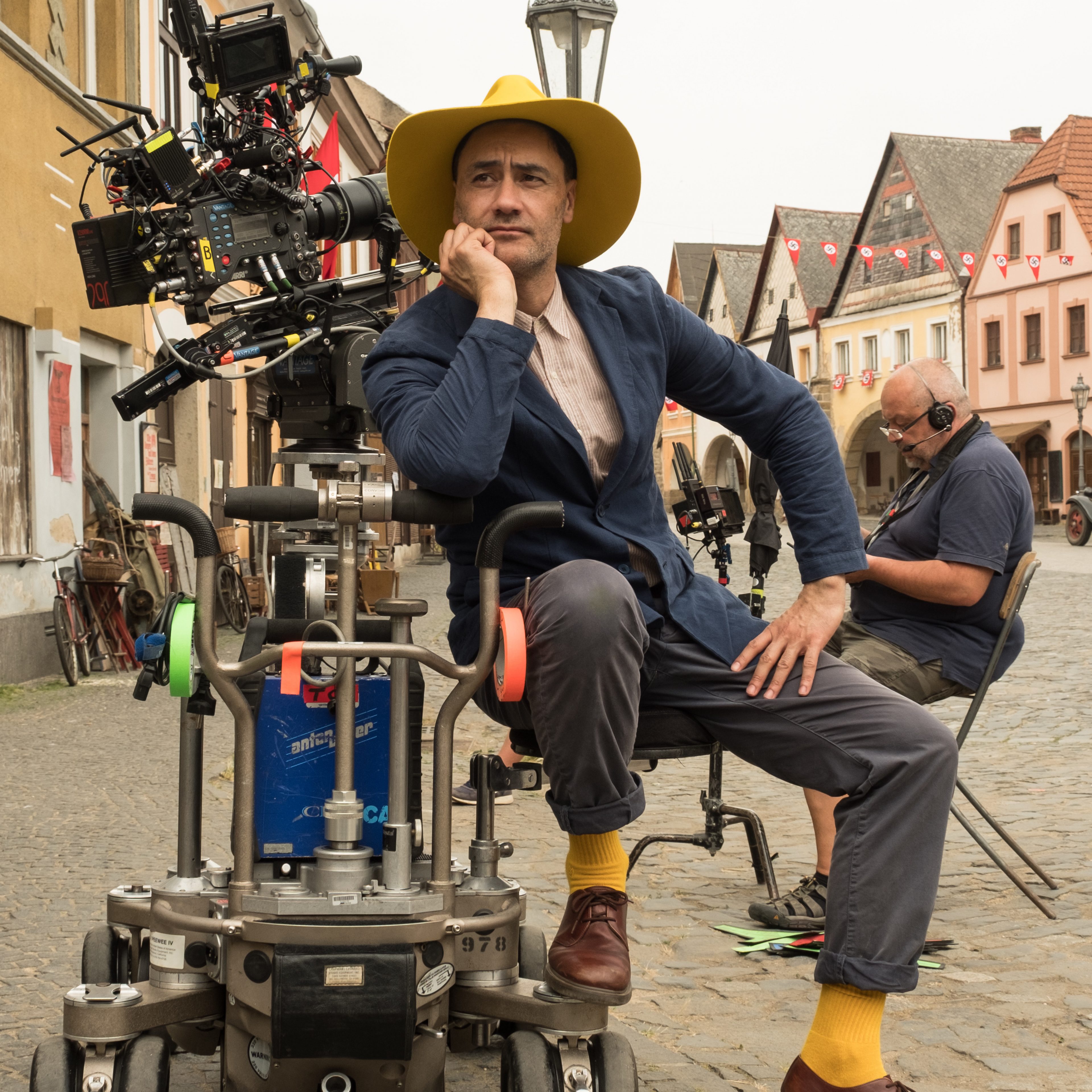
EAGLE: I don’t know what that was. I asked my assistant how long the first assemble was. He said two hours 40 minutes. I think he might have been referring to that compile. I do cut tight. I’m not asking the director where the cuts should be. I’m trying to get it right the first time, every time.
And you know that you’re gonna have to keep reworking it — and break that work and throw it out and start again — but it helps to get a sense of what the overall feeling of the movie will be. If you’re cutting, if you’re not holding back.
HULLFISH: Did you do the whole credit sequence at the beginning of the movie or was that outsourced?
EAGLES: Not the actual graphics themselves.
HULLFISH: No. I meant the editing of the opening credit sequence.
EAGLES: That was kind of a pet project for me. That was a whole lot of fun to get a whole bunch of Nazis and make them sing along to the Beatles and clap their hands and look like they were playing instruments. That was really fun for me and took a lot of work. We had to gather a lot of footage and sift through it.
One of our assistants — Morgan Kern — was in charge of contacting stock footage libraries and getting as much stuff as possible.
HULLFISH: To explain to someone who hasn’t seen it — there’s a lot of footage of Nazi propaganda films from that era.
EAGLES: We leaned on Leni Riefenstalh’s propaganda film, The Triumph of the Will. It opens in a similar way to The Triumph of the Will.
I just found a little bit of abstraction was quite good there, so we don’t see much of the real Adolph. It was too jarring going from Taika’s Adolph to the real deal. And it also made him scarier and more imposing to suggest him. So we see the back of his head. We see his hand and we focus a lot on hands in that sequence. Not just the Hitler salute that everyone does but everyone reaching out to touch him in combination with the music felt like it really communicated the hysteria — the Beatlemania — of the moment. So there was a lot of fun.
We did try to outsource that at one point because I was so busy with cutting the film and all the notes on the film, but it didn’t really hit it, so I just carried on.
HULLFISH: I loved it. That was a really fun watch.
EAGLES: I’m glad you enjoyed that.
HULLFISH: Let’s talk some more about music — score versus needle drop. Did you go through a variety or had those pieces have been kind of preordained by Taika or the script?
EAGLES: Combination. I would say compared to Hunt for the Wilderpeople or especially What We Do in the Shadows or other films I’ve done for other filmmakers… on those films I came up with a lot of the needle drops. This one, Taika already had the Beatles for the beginning and he already had Heroes for the ending. He wanted to have those German language versions of British and American pop songs. The third one that we found during the process was Roy Orbison Mama —
https://www.youtube.com/watch?v=7fGfwYm1BQA
And he had a couple of other things he didn’t know necessarily where he wanted to use them — like the Tom Waits song. I can’t remember if he knew he wanted to use that over the Hitler youth montage but we also tried “Everybody Wants to Rule the World” — Tears for Fears — and we tried The Cure’s “Boys Don’t Cry.”
So even if he would put stuff in the script, I would always challenge him and try some other tunes, then I would know if he’s really fixed on it. But having had that direction from the script, I had a good idea of where we were sitting musically and how to flesh that out.
Temp was a lot harder. With temp, Taika said, “I just don’t want it to sound like any other film in the genre. I don’t want it to feel like Schindler’s List or Boy in the Striped Pajamas. It should feel like one of my movies.”
But when I went back and looked at his movies, the first few are just a guitar and a drum machine and that didn’t feel quite right, so the key, when it all came together for me, was when I found a whole lot of Carl Orff pieces that were written for children’s ensembles. Lots of flutes and little drums. And I think it was actually played by kids, so some of it’s quite martial but it’s a bit wonky.
It has the sense of innocence — a sense of not war but kids playing at war — that kind of fit with Jojo’s character. And then I found some John Cage pieces that were really weird and fruity. We used those for moments when Adolf and Jojo were freaking out or for when he gets knocked out by the grenade and he’s in a kind of altered state.
And then I found these harp pieces by Marcel Tournier which we used for Rosie. To indicate the mother’s theme. Some of those things found their way into the score a little bit, but also Michael just brought just a great sense of heart and emotion to the movie and he was able to write us themes. We always knew that we wanted a Rosie theme that would pay off when you see those shoes. That’s very hard to do with temping.
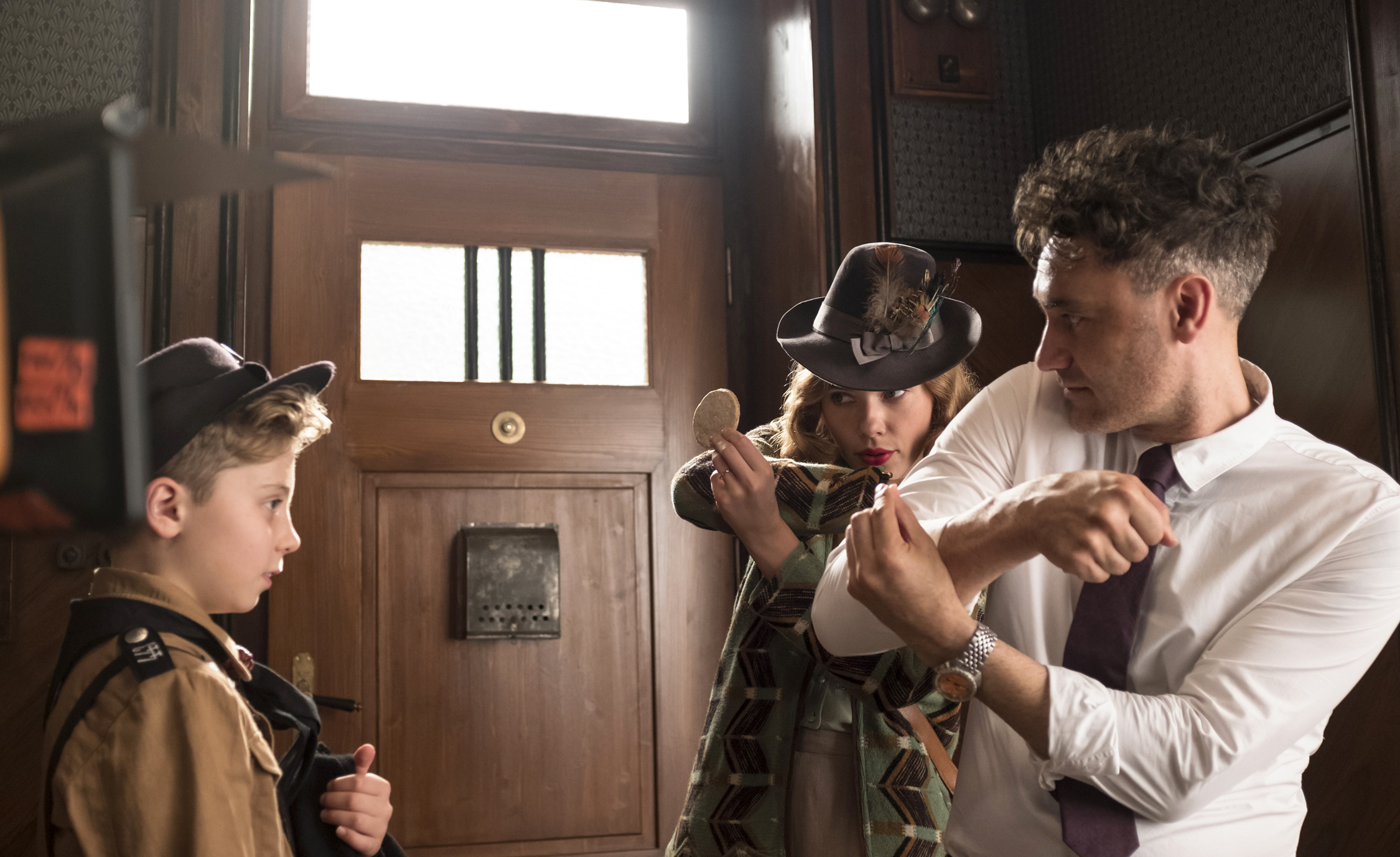
We scored it to a piece from the 400 Blows, the Truffaut film — beautiful piece of Jean Constantin score — but it was hard to then reverse-engineer that and fit it into other parts of the movie. So that was the beauty of getting Michael on board.
HULLFISH: You were just nominated for an Oscar and for an ACE Eddie for this film. What do you look for — and what do you think your colleagues look for — when you and they have to judge someone else’s editing?
EAGLES: It’s impossible to do really. Unless you’ve seen the scripts — the real original script — and you’ve seen all of the rushes, the dailies, you can’t really judge what someone did on a movie. All you can say is, “Did I like that movie?” And if you liked the movie, then you like the editing. It’s as simple as that. At the very least they didn’t screw it up.
I don’t think about it much more deeply than that. I don’t think you can judge it. I think some people were drawn towards films that have a lot of cuts and are exciting and have really highly visible editing, but knowing that 90 percent of what we do is invisible, I don’t see how you can really judge it.
So I just feel very lucky to have been nominated. And I’m glad that people liked the film and I take that as a compliment. Whether it was nominated for editing or Best Picture or whatever.
HULLFISH: Congratulations and have fun tonight at the EDDIEs.
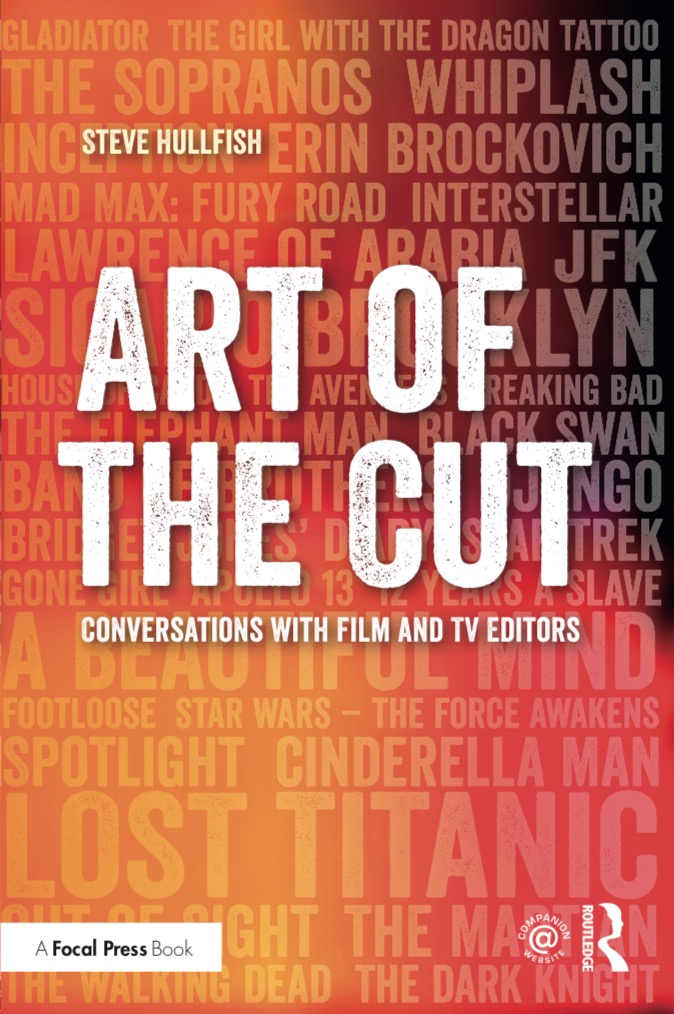
EAGLES: Thank you so much.
HULLFISH: Wonderful talking to you.
EAGLES: You too. Thanks.
To read more interviews in the Art of the Cut series, check out THIS LINK and follow me on Twitter @stevehullfish or on imdb.
The first 50 interviews in the series provided the material for the book, “Art of the Cut: Conversations with Film and TV Editors.” This is a unique book that breaks down interviews with many of the world’s best editors and organizes it into a virtual roundtable discussion centering on the topics editors care about. It is a powerful tool for experienced and aspiring editors alike. Cinemontage and CinemaEditor magazine both gave it rave reviews. No other book provides the breadth of opinion and experience. Combined, the editors featured in the book have edited for over 1,000 years on many of the most iconic, critically acclaimed and biggest box office hits in the history of cinema.

Filmtools
Filmmakers go-to destination for pre-production, production & post production equipment!
Shop Now